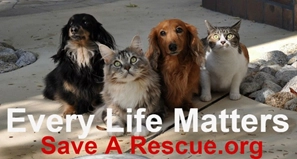#1: Picking The Wrong Dog/Wrong Time ~ for Your Lifestyle & Personality
#2: Dismissing Training & Socialization Needs
#3: Not Enough Exercise Activity
#4: Avoiding Vet Checkups
#5 Avoid Heartworm Prevention
#6: Neglecting Dental Health
#7: Feeding Improperly
#8: Failing to Budget for Dog Expenses
#9: Letting Behavioral Problems Get out of Hand
#10: Risking Lost Dog Experience
~~~~~~~~~~~~~~~~~~~~~~~~~~~~~~~~~~~~~~~~~~~~~~~~~~~~~~~~~~~~~~~~~~~~~~~~~~~~~~~~
#1: Picking The Wrong Dog/Wrong Time ~ for Your Lifestyle & Personality
Getting a dog on impulse is pretty easy to do. It can be so hard to resist those puppy-dog eyes, especially when it’s is a dog in need of a home. However, there are many practical decisions to make before you decide that dog is the one for you. To name just a few,
Can and will you take the necessary time for dog training, exercise, other activities, bonding, etc.
Are you willing to put up with shedding, messes, illnesses, behavior problems and more?
Can you afford the dog?
Is the dog’s size appropriate for your living space?
Are you even ready for a dog, or to add another dog to your lifestyle?
Will your current pets tolerate the addition?
Ask yourself these questions and more before you risk getting a dog that will be unhappy (or that will make you unhappy).
#2: Dismissing Training & Socialization Needs
Every dog needs basic training and socialization. Some need more than others, but they all need some. If you decide not to train your dog, you are putting your dog at a disadvantage. How will she/he know your rules? What kind of structure and guidance are you providing? Don’t think of training as a chore. When done positively, training is actually fun and enriching for dogs.
used to things in the environment, like children, other adults, other animals, objects, environments, and various situations. Without proper socialization, dogs can develop fears and phobias. Even worse, lack of socialization can lead to an array of behavior problems. Socialization is not just for puppies. You can socialize your adult dog too! Want to bring your dog out on the town? A well-trained, well-socialized dog will be more welcome in public places that allow pets, such as parks, restaurant patios and even some businesses. Also, your friends and family are more likely to invite you to bring your dog to events if she/he is behaved and well-adjusted.
#3: Not Committing to Daily Exercise Activity/Needs
Exercise is a basic need for every dog. Lack of exercise can lead to health problems and behavior issues. Some dogs need more exercise than others, but most need more than simple walks. Assess your dog’s activity needs. Is your dog restless and bored? Does your dog seem hyperactive and excited all the time? Is your dog overweight? These are all signs that she needs more exercise. Dogs need mental stimulation too.
Try exercise that involves games to give your dog well-rounded activity.
There are great dog sports ~ a great form of exercise & fun for the both of you & plenty to choose from. Physically active dogs might really enjoy agility.
Hounds and other curious sniffers usually love nose work or tracking.
#4: Avoiding Vet Checkups
A lot of dog owners skip or put off routine vet visits unless something is going on with their dogs.
You may think, “my dog is healthy and feeling great, why stress him out with a vet visit?”
Dog owners often want to avoid the cost and inconvenience of a vet visit.
Reality check:
Your veterinarian is a key part of keeping your dog healthy. Most dogs will hide illness until it becomes unbearable. Routine wellness exams can allow vets to detect small health issues before they become big problems.
When your dog is showing signs that something is not right, don’t wait for it to get worse. Contact your vet for advice before something more serious becomes more obvious.
#5 Avoiding HeartWorm Prevention
The American Heartworm Society strongly recommends year-round heartworm prevention for all dogs in all 50 states. Heartworm disease is a serious and potentially fatal disease. Caused by infestation of the parasite Dirofilariasis immitis, heartworms are transmitted by mosquitoes and can affect any dog anywhere in the US.
You may say, “if heartworm disease can be treated, why bother with costly prevention?” If you think heartworm prevention is expensive, then you have never needed to pay for heartworm treatment. The heartworm treatment protocol may cost as much as $1000-$1500, and your dog can easily be reinfected in the future.
Monthly heartworm prevention will cost about $35-$250 per year depending on the size of the dog and the brand of prevention.
In addition to cost, heartworm treatment is risky for dogs, especially older dogs or those with other health issues. Look at the facts and you will realize that heartworm prevention is the better choice.
#6: Neglecting Dental Health
80% of our dogs & cats, over the age of 3 years, have Gingivitis & Halitosis gum disease. If left unchecked, this can become periodontal disease, leading to tooth loss and even systemic diseases like kidney failure and heart disease. How can  you prevent this? Home dental care is the key. In a perfect world, everyone would brush their dogs’ teeth DAILY. In real life, many of us have trouble keeping up with it. If possible, our best option is to commit to a tooth-brushing routine. You can also use a good dental home care product (ask your vet for recommendations), but it won’t take the place of brushing. Either way, you should plan ahead for regular veterinary dental cleanings.
you prevent this? Home dental care is the key. In a perfect world, everyone would brush their dogs’ teeth DAILY. In real life, many of us have trouble keeping up with it. If possible, our best option is to commit to a tooth-brushing routine. You can also use a good dental home care product (ask your vet for recommendations), but it won’t take the place of brushing. Either way, you should plan ahead for regular veterinary dental cleanings.
If you decide that home care is not for you then know that a professional veterinary dental cleaning is inevitable. Even with excellent home care, most dogs will occasionally need a veterinary dental cleaning (maybe every few years or less). Without tooth brushing, but with another type of home care, the need for veterinary cleaning will be a little more frequent.
Without any type of home care, your dog will need a veterinary dental cleaning about 1-2 times per year.
#7: Feeding Your Dog[s] Improperly
When it comes to feeding your dog, do you know the basics? All dog foods are not created equal. Before buying a dog food, check labels and read reviews. Talk to your vet and other dog experts. Remember the following: Ingredients matter. Over a lifetime, improper feeding can lead to health issues, including skin problems and malnutrition. Many experts think a poor diet can even lead to cancer. Don’t overfeed.
Canine obesity is on the rise, and it’s partly due to overfeeding. If your dog is overweight and you are feeding the amount recommended on the bag, then you probably need to reduce it.
Be selective with treats and chews. Some dog chews can be dangerous, and some human foods are toxic to dogs. Be careful purchasing products manufactured in China ~ they have very little rules for processing pet treats and often use cleaning agents that are extremely toxic to our pets.
#8: Failing to Budget for Dog Expenses
Dog ownership costs money.. Make sure your budget includes all of the routine costs associated with dog ownership, like food, dog supplies and veterinary care.
#9: Letting Behavioral Problems Get out of Hand
Behavior problems in dogs may start small, but most will get worse. Ignoring the issues will let them fester and grow. Worse, we sometimes unconsciously reinforce bad behavior in our dogs.
Giving a treat to an aggressive dog tells that dog that she is doing the right thing. Fear and phobias are also sometimes overlooked or minimized. 
Phobias tend to get worse over time and can lead to other behavior
problems or even health issues.
Reassuring and comforting a scared dog tells her that she is acting appropriately.
Don’t let these issues continue. When issues are just starting, you may be able to address them quickly. Sometimes the solution is in a book or on a website (just be sure it’s a trusted source; ask your vet and do your own research). If problems escalate, find a professional to help your dog before it really gets out of control.
#10: Risking ‘Lost Dog’ Possible Experiences
Dogs are lost every day. Some are even stolen. Are you taking the necessary steps to protect your dog? Some things are obvious, like keeping your dog on a leash and not leaving him unattended. Also, if your dog is lost, do you know what to do? One of the most common mistakes owners make: putting a collar on a dog, but neglecting to add an ID tag. Your dog should wear a collar at all times with current identification
. Also, consider micro-chipping your dog for an added layer of protection. This can help you become reunited with your dog if lost. Otherwise, your dog may become one more homeless pet in an overcrowded shelter.









